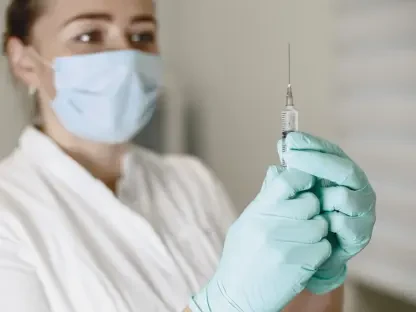In the ever-evolving landscape of medical marijuana in the United States, a staggering statistic emerges: over 30 states have legalized cannabis for medical use, yet federal barriers continue to stifle research and patient access, creating a complex picture of an industry on the cusp of transformation. With President Trump’s recent policy shifts igniting hope for deregulation, juxtaposed against persistent bureaucratic challenges within the Drug Enforcement Administration (DEA), the stakes for patients, researchers, and companies have never been higher.
Overview of the Medical Marijuana Landscape
The medical marijuana industry in the United States stands as a rapidly growing sector, with market valuations soaring as public acceptance broadens. Millions of patients rely on cannabis-based treatments for conditions ranging from chronic pain to epilepsy, driving demand for safe, regulated products. This growth underscores the industry’s societal impact, as it reshapes healthcare options and challenges long-standing stigmas surrounding cannabis use.
Key segments such as research, clinical trials, and patient access define the industry’s core operations. Major players like MMJ International Holdings lead the charge in developing pharmaceutical-grade cannabis, while regulatory bodies, including the DEA and the Food and Drug Administration (FDA), wield significant influence over progress. Despite the momentum, federal policies have historically hindered scientific exploration, with stringent scheduling of marijuana as a Schedule I substance limiting research opportunities.
Public perception has shifted dramatically in recent years, with growing support for medical marijuana fueled by anecdotal success stories and emerging data. However, resistance from federal agencies persists, rooted in decades-old policies that clash with modern understanding. This tension between progress and obstruction sets the stage for a critical examination of current policy reforms and their implications.
Policy Shifts and Industry Trends Under Trump’s Administration
Deregulation Initiatives and Key Developments
President Trump’s Executive Order 14192, titled “Unleashing Prosperity Through Deregulation,” marks a significant pivot in the federal approach to medical marijuana. Issued recently, this order targets bureaucratic barriers within the DEA, withdrawing numerous marijuana-related rulemakings that have long delayed research approvals. Such decisive action signals a departure from traditional federal hesitance, aiming to streamline processes for stakeholders.
This policy reform has spurred notable trends, including a renewed emphasis on patient-centered frameworks over regulatory red tape. The withdrawal of specific rules previously cited as reasons for inaction opens doors for innovation, allowing entities to focus on therapeutic advancements. Companies like MMJ BioPharma Cultivation stand to benefit as they push forward with FDA-authorized clinical trials for serious conditions like Huntington’s disease.
These changes foster an environment ripe for collaboration between private enterprises and regulatory bodies. By reducing procedural hurdles, the administration’s approach encourages faster development of cannabis-based therapies. This shift not only supports industry growth but also aligns with broader calls for reform in drug policy at the national level.
Impact and Future Projections
The deregulation initiatives promise substantial growth in medical marijuana research, with the potential to expand patient access to novel treatments. Analysts anticipate that streamlined processes could accelerate the timeline for clinical trials, bringing therapies to market sooner than previously expected. This momentum is likely to enhance the industry’s credibility within mainstream medicine.
Looking ahead, market dynamics may shift as barriers to entry diminish, inviting new players into the field of cannabis research. Scientific progress, bolstered by federal support, could yield breakthroughs in understanding marijuana’s therapeutic potential, further integrating it into clinical practice. Projections suggest a significant uptick in investment as confidence in regulatory stability grows.
Patient outcomes stand to improve markedly if these trends hold, with faster access to treatments addressing unmet medical needs. The broader acceptance of cannabis-based therapies may reshape healthcare protocols over the coming years, particularly for chronic and debilitating conditions. Such developments hinge on sustained policy support and the resolution of lingering administrative challenges.
Challenges in DEA Practices and Systemic Issues
Despite recent progress, the DEA remains a formidable obstacle to medical marijuana advancement, with procedural delays hampering research efforts. Historically, the agency has resisted cannabis studies by citing complex regulatory requirements, often stalling applications for years. This entrenched opposition continues to frustrate industry stakeholders seeking to navigate the approval process.
Systemic flaws within the DEA exacerbate these issues, as evidenced by the Department of Justice’s admission of constitutional violations in the agency’s administrative law system. Such revelations, stemming from legal challenges like those faced by MMJ BioPharma Cultivation, highlight deep-rooted problems that undermine fair oversight. These shortcomings slow progress and erode trust in federal regulatory mechanisms.
Addressing these challenges requires multifaceted strategies, including holding personnel accountable for delays and advocating for comprehensive agency reform. Streamlining internal processes and aligning DEA practices with reformist goals could mitigate ongoing friction. Without such measures, the industry risks perpetuating a cycle of obstruction that denies patients timely access to critical therapies.
Regulatory Environment and DEA Accountability
The regulatory landscape for medical marijuana remains intricate, shaped by DEA policies that often conflict with reformist ambitions. Significant issues, including constitutional violations in the agency’s tribunal system, have come to light through recent court admissions by the Department of Justice. These revelations point to a systemic failure to uphold fair and lawful oversight.
Compliance challenges are compounded by continued resistance within the DEA, exemplified by the case of attorney Aarathi Haig, whose role in defending questionable practices has drawn scrutiny. Despite documented professional lapses, her ongoing involvement in agency matters raises questions about accountability and commitment to change. This situation underscores broader tensions between policy directives and internal culture.
The impact of regulatory delays is acutely felt by companies like MMJ BioPharma Cultivation, whose applications for cannabis cultivation linger unresolved despite meeting stringent criteria. Such inaction not only hampers individual firms but also impedes the collective goal of expanding patient access to therapies. Resolving these bottlenecks is essential for aligning regulatory frameworks with the needs of a growing industry.
Future Directions for Medical Marijuana Reform
Under Trump’s administration, the trajectory of medical marijuana policy appears poised for innovation through sustained deregulation. A focus on reducing federal overreach could catalyze advancements in research methodologies, enabling more robust studies of cannabis’s medical applications. This environment may encourage novel approaches to drug development and delivery.
Emerging disruptors, including shifting attitudes within the medical community and evolving consumer preferences, are likely to influence policy evolution. Global trends in cannabis legalization offer valuable lessons, potentially inspiring domestic reforms that prioritize evidence over ideology. These external factors could accelerate the integration of marijuana into standard healthcare practices.
Key growth drivers include the urgent need for DEA alignment with reformist agendas and the resolution of personnel controversies that hinder progress. Ensuring that agency actions reflect policy intent will be critical for maintaining momentum. As these elements converge, the industry stands at a pivotal moment, with the potential to redefine therapeutic landscapes through collaborative reform.
Conclusion and Path Forward
Reflecting on the developments discussed, Trump’s deregulation efforts represent a bold step toward dismantling long-standing barriers in medical marijuana research, while persistent DEA challenges, particularly surrounding figures like Aarathi Haig, cast a shadow over these gains. The tension between policy progress and bureaucratic inertia reveals a critical juncture for the industry, demanding resolution to ensure patient benefits.
Moving forward, actionable steps include urging DEA Administrator Terry Cole to expedite pending applications, such as those from MMJ BioPharma Cultivation, to prioritize patient needs over procedural delays. Implementing transparent accountability measures for agency personnel could restore trust and align operations with reform goals. Additionally, fostering dialogue between regulators and industry stakeholders offers a pathway to sustainable progress, ensuring that future reforms balance innovation with oversight.









